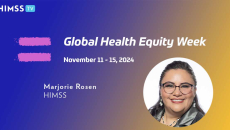Workforce
Among other wins, St. Luke's University Health Network has reduced length of stay for patients going to post-acute facilities by 0.3 days. This decrease translates into significant bed availability and improved patient throughput.
What's more, the 2024 Compass Survey from symplr finds that 85% of clinicians say they lose more than an hour each day to administrative tasks – time that could be used for patient care if the right technology was in place.
The typical chief information officer in healthcare is taking on more responsibility for determining strategy and digital transformation, with 84% of CIOs now part of their organization's executive leadership team.
The women's healthcare company failed to find adequate product market fit, and the company's CEO, Alison Greenberg, says many lessons were learned along the way.
The former GOP congressman from Georgia has served as a U.S. Navy chaplain and is a colonel in the Air Force Reserve. He would inherit a major EHR modernization initiative, currently paused but slated to restart in 2025, among other IT imperatives.
By partnering with Meharry Medical College, the cloud giant says it aims to enhance community care and wellness in Middle Tennessee with AI and clinical applications, spark health innovation and cultivate workforce skills.
This can include mentorship and support for local communities, work to improve health equity at the state level and much more, says Marjorie Rosen, vice chair of the HIMSS Chapter Advocacy Task Force.
The new Veterans Community will support veteran workforce development and transition to civilian life for former members of any branch of the U.S. military and their spouses.
A virtual nursing success story emerges from a large New York health system, and examples of the kinds of care coordination services that virtual nurses can handle during message triage, from Anurag Mehta, CEO of Omega Healthcare.









